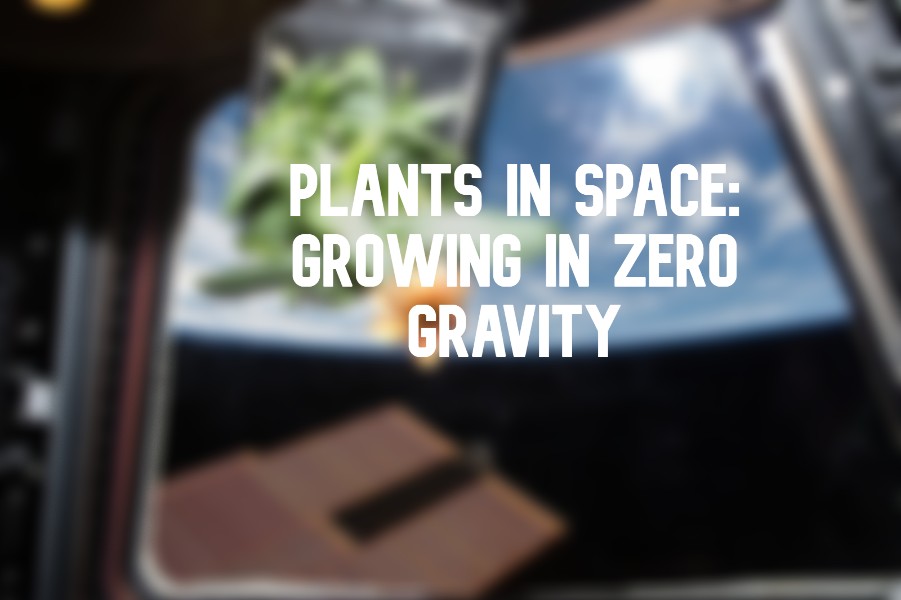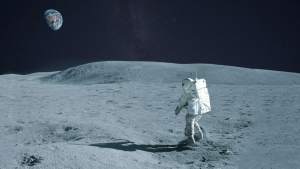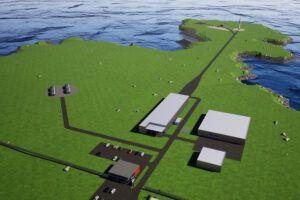Plants in Space: Growing in zero gravity
14th Sep 2022
Plants are an essential part of the Earth’s ecosystem. Without them, our planet would be cold and lifeless. Plants give us oxygen, food, medicines, and even building materials. We draw daily the energy of nature from plants and are inspired by their natural aesthetics. But what about those who leave the Earth for many months for the sake of space research? We know that, for months, astronauts prepare for survival in harsh extraterrestrial conditions, learn to cope with physical and psychological difficulties, and eat special food in bags. But can they grow plants in space for more comfort thousands of miles from Earth?
Yes, they can and have been doing just that for a long time. Let us find out what plants can grow in space, how they do it, and why we need this.
Why is growing plants in space important?
Foremost, growing plants in space is an important part of scientific experiments. Plants are a promising solution for long-duration space missions. Scientists believe that in the foreseeable future, growing crops on space stations will solve the problem of food supply, ensure a healthy diet, and help create an onboard microclimate. After all, plants absorb carbon dioxide from the air and release oxygen. And finally, a green island aboard a spacecraft stuffed with metal and plastic helps create a comfortable atmosphere resembling a home, helping astronauts cope with psychological and emotional stress.
What was the first plant in space?
The plants in space appeared much earlier than man. Before venturing onto the first manned spaceflight, scientists carefully studied the impact of an unknown environment on plants and animals.
On 9th July 1946, the first experiment to answer the question ‘can seeds survive in space’ took place. Seed strains specially developed by Harvard University and the Naval Research Laboratory were launched to an altitude of 83 miles on a V-2 rocket confiscated by the Americans from the defeated Reich. But these strains didn’t survive. A second attempt with corn seeds three weeks later was more successful, as the seeds germinated. Soon after, corn, rye, and cotton flew to sub-orbit.
In the 1960s, the USSR conducted a number of successful experiments on the survival of living organisms in space. Along with dogs, mice, fungi and bacteria, seeds of corn, wheat, peas, onions, lettuce, cabbage, and legumes were sent to orbit. Upon return, some crops yielded more than their ‘peers’ on Earth. This showed that the environment on the spacecraft is not detrimental to seeds, and it is possible to grow plants to a certain extent. However, it took almost 16 more years to get the first plant grown in space.
The plant in question was Arabidopsis, a small flowering plant related to cabbage and mustard. The experiment was prepared by Lithuanian scientists and carried out in 1982 by the crew of the Soviet space station Salyut-7 in the experimental micro-greenhouse Fiton-3.
How can a plant survive in space?
It is a difficult but feasible task. Plants cannot grow in outer space due to the cold and lack of oxygen, so it is necessary to create a completely isolated and closed life support system for the plants. After all, they must take root, and draw nutrients and water from the system, while the leaves need light to go through all the stages of photosynthesis.
How plants grow without gravity is another problem. Microgravity can negatively affect the plant even at the stage of seed growth. The lack of gravity and light makes it difficult for a sprout to determine its growth direction. It also needs to deal with the circulation of water under these conditions and whether the water can enter the plant cells. Another challenge is the lack of space on the spacecraft, which would be needed for wide-ranging experiments with different plant types.
What’s the best place in space to grow plants
Currently, the best place to conduct such experiments is the International Space Station because it can provide:
- enough space to accommodate specially prepared containers (with lighting, a special substrate-soil, ventilation, humidification);
- a long stay, since each plant needs several weeks or months from the first shoots to ripening;
- constant monitoring of the growth process — not only with equipment but also by a person;
- the ability to make adjustments;
- tasting of a fresh product;
- collecting and sending samples for ground research.
The effective use of space stations for growing plants was proved by experiments on the Soviet Salyut 7, Mir, and the American Skylab. Since 2001, NASA and ESA have been growing plants on ISS.
What kind of plants can grow on the ISS?
In 2001-2002, the 4th ISS Expedition started growing biomass. A little later, scientists created a whole vegetable production system called Veggie. This is a kind of space garden on the ISS, most often with six plants, each of which has a special cushion with nutrients, moisture, and air to ensure growth under minimal gravity. The purpose of the NASA Veggie project is to study the process of plant growth, enrich astronauts’ diets with fresh herbs and vegetables, and use plantations as a therapeutic tool to maintain the astronauts’ psychological health.
So, what did Veggie manage to produce on the ISS? These are varieties of lettuce, radishes, peas, zinnia flowers, and sunflowers.
In 2010, the seeds of three varieties of lettuce sprouted, grew, and were eaten in 14 days. This was the first time that the astronauts had tried plants grown in space.
In 2016, a picture showing a bouquet of flowering zinnias circulated on the Internet; in the picture background, one could see our planet from the window of the space station. It was made by astronaut Scott Kelly, who revived withered flowers, giving the whole world on Instagram an answer to the question ‘are there plants in space’.
In 2017, NASA announced the development of a more advanced plant growing system called Advanced Plant Habitat. As of today, a test prototype of the device is used for engineering development tests at Kennedy Space Center.
Can you grow fruit in space?
It’s probably possible, but so far, Veggie is showing better results with other crops. All samples grown in space are carefully studied on Earth. Scientists are concerned about the changes taking place in the cells of green organisms, as well as the question of what are the benefits of growing plants in space. So far, there is no comprehensive information about the significant difference in nutrients between space and terrestrial vegetables. So who knows, maybe Advanced Plant Habitat will take on the cultivation of peaches or apples one day soon.
What would happen to a tree in space?
Tree seeds were not grown in space, but it is known that they can perfectly survive space travel. In 1971, 500 seeds of five tree species from the US Forest Service were sent into lunar orbit during the Apollo 14 mission. Upon returning to Earth, the seeds were planted and sprouted. In 40 years, “cosmic” pines, plane trees, firs, and redwoods, or as they are also called “Moon trees”, did not develop any differences from their earthly counterparts.
How many plants are in space?
In all the years of “green” experiments in space, many flora representatives have been grown:
- arabidopsis;
- bok choy (Chinese cabbage);
- super dwarf wheat;
- apogee wheat;
- brassica rapa;
- rice;
- tulips;
- kalanchoe;
- flax;
- onion;
- peas;
- radish;
- salad;
- wheat;
- garlic;
- cucumbers;
- parsley;
- potato;
- dill;
- lettuce;
- basil with cinnamon;
- cabbage;
- zinnia hybrida;
- Mizuna salad;
- red romaine lettuce;
- sunflower;
- ceratopteris richardii.
Do plants grow differently in space?
To answer this question, in 2018, Chinese scientists, as part of the biological experiment Lunar Micro Ecosystem, developed a hermetic life support module Change 4, filled it with plant seeds and insect eggs, and sent it… to the Moon!
The main project question is — can plants produce oxygen in space, and if there will be enough oxygen to give birth to insects and keep them alive? The seeds of tomatoes, potatoes, rapeseed, cotton, the flowering plant Arabidopsis Thaliana, as well as silkworm eggs were included in the research. After some time, the cameras recorded small seedlings of cotton, which became the first plant to grow on the Moon.
Final thoughts
Growing plants in space is actually happening and rich harvests at space stations are only a matter of time. In The Martian film, Matt Damon grew potatoes on Mars. It’s fiction, you may say. Yes, but even some 60 years ago, flights to the Moon were fiction, too.






Thank you for your comment! It will be visible on the site after moderation.